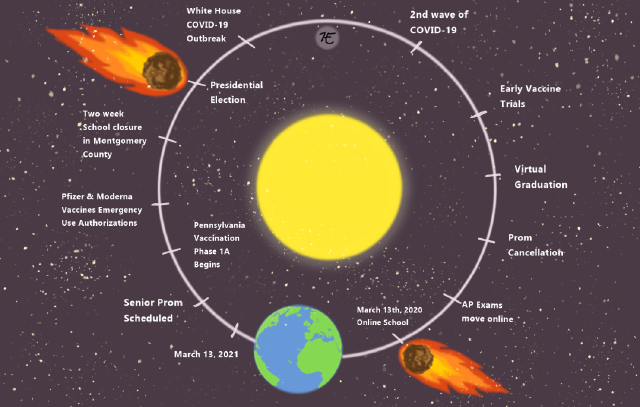The two weeks that turned into a year: we entered this arduous journey with a set of expectations. These expectations were met with an unfolding pandemic, resulting in very different realities. As we continue to face the challenges of COVID-19 a year later, we reflect upon the hope that got us through it all.
Entering our two-week “break” on March 12, 2020, many felt relief. It meant catching up on sleep, spending time with family, working on that passion that had always been put off to a later date, binging that television show and catching up with our own lives that had seemingly gotten away from us.
But as it grew clear that our two-week “break” would become an indefinite one until further notice, the world as we knew it changed. Instead of feeling that we were catching up on life, it started to feel like our lifestyles were the ones catching up with us. Anxiety, fear and grief settled in for many. It was our hope for a better future, for the day quarantine ended, for the day we could see each other again, for the day we had a vaccine that allowed us to persevere.
The months in quarantine, for many, felt like the dark ages, with no beginning and no end. We grew acutely aware of time and space. The time that had passed by, or an inability to tell the time that had passed by. The space in between us, or the lack of space in between us in our own living arrangements.
The experience of coming back to school was both familiar and alien to many. Something we had been familiar with for so long was changed in fundamental ways, but something we had not been able to experience for so long had finally been restored.
As we continue with our lifestyle in this not-so-new normal, staying the course with masks, social distancing and avoiding large gatherings is important and necessary in order to keep combating the spread of the virus.
We are grasping at the edge of a future without COVID-19 restrictions and a pandemic to constantly worry about. Researchers, working months on end, have finally been able to produce a variety of vaccines that will help us stay safe if we are just patient enough to wait.
The FDA allowed for emergency approval of vaccines from Pfizer and Moderna in December and as of March 29, 2.76 million doses are administered on average a day according to the New York Times.
We can finally dare to think that mass vaccination and countrywide vaccine rollout will allow for a life that is more than just working, surviving and hanging onto our last thread of hope.
The Way We See It: Hope through pandemic has allowed for perseverance
A full year has passed since the first wave of COVID-19 caused a lockdown throughout the country and virtual schooling for months. New waves have emerged, yet we must not lose the one thing that currently motivates and drives us; we must not lose hope.
The Arrowhead Editorial Board
•
April 9, 2021
0
More to Discover







